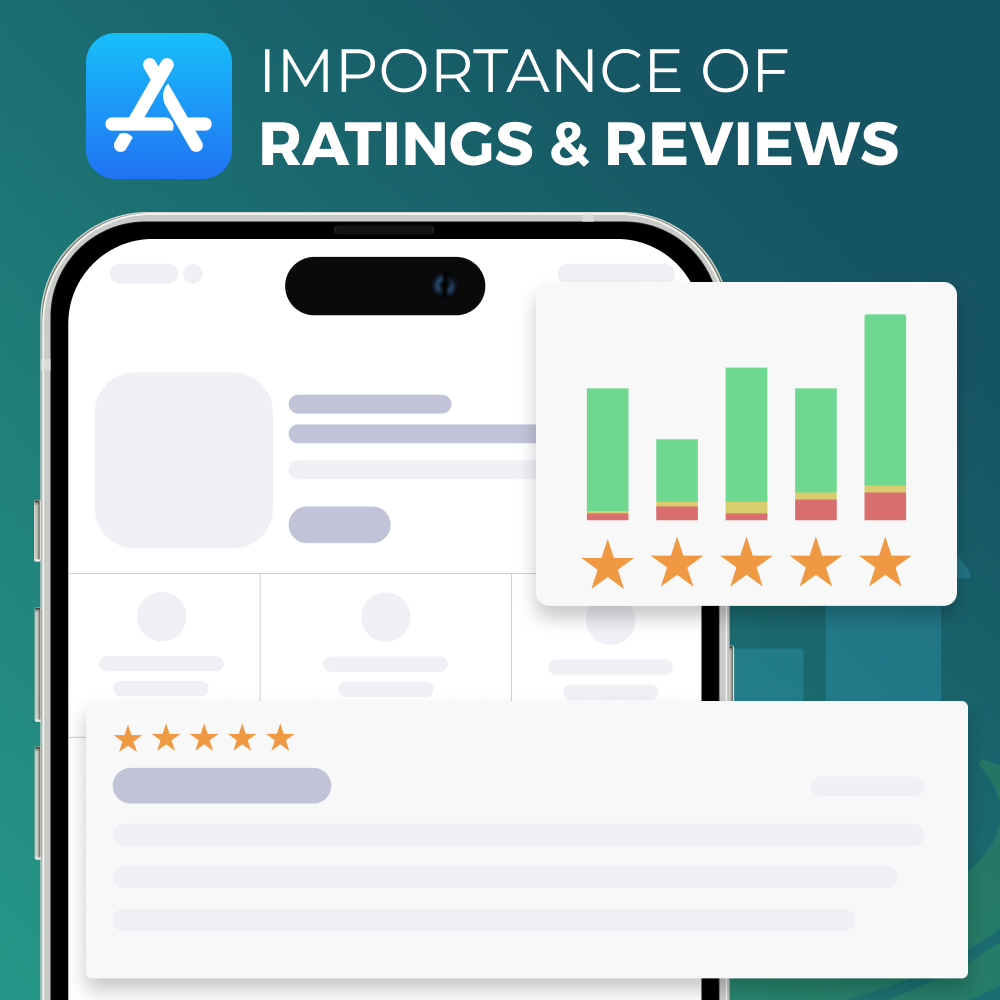In the ever-evolving world of app development, staying on top of the latest trends and updates is crucial for success. Recently, the App Store has undergone significant algorithm updates that have largely reshaped the dynamics and importance of app ratings and reviews. In this blog post, we’ll check out the key changes and explore strategies for developers to adapt and thrive in this new environment.
One of the major shifts in the recent App Store algorithm updates has been the increased significance of recent reviews. Apps that generate positive reviews and higher ratings over the last 7-30 days are experiencing a boost in keyword rankings. This highlights the importance for developers to consistently engage with users and actively encourage star ratings and text reviews, in order to enhance their app’s visibility and appeal. When a user searches for an app, it’s Apple and Google’s job to provide the highest quality, most relevant apps that answer their query. It makes sense that users who have used the app recently are leaving positive reviews.
Replying to Reviews
Amidst the changes in the algorithm, one aspect remains constant – the importance of engaging with user reviews. Responding to reviews not only demonstrates a commitment to customer satisfaction but also plays a pivotal role in the algorithm’s assessment of an app’s relevance and responsiveness. Apple and Google value developers who are active and engaging with their users with regular updates, replies to reviews and more. That being said, all developers should have a concentrated effort toward replying to reviews. Part of our ASO service package is having access to our Reviews Manager tool, which makes cross-platform review replies simple with the use of AI. We designed this tool to help developers efficiently manage and respond to user reviews.

Prompt Timing & Strategy
Most developers wonder how and when to request that a user rates their app. Most developers utilize poor timing and strategy for showing rating prompts, and are losing a lot of opportunity to improve ratings. Developers must carefully strategize when to display native SDK review prompts to maximize their impact. To illustrate this point, Below are some graphs representing one our our client’s ratings over time. With the introduction of native prompts, along with strategic effective timing resulted in a substantial increase in positive reviews. In this case, the client went from single digit ratings per day, up to a few hundred. Within a matter of weeks, their overall star rating improved from 4.2 to 4.8.


Conclusion options:
As the App Store algorithms continue to evolve, developers must adapt their strategies to stay ahead of the curve. The emphasis on recent ratings and reviews, the importance of engaging with users, and the strategic timing of native SDK review prompts are critical factors that can significantly impact an app’s success. By staying informed and utilizing tools like our Reviews Manager, developers can navigate these changes with confidence and continue to enhance their app’s visibility and user satisfaction.
Need help managing your reviews? Contact our team of experts to learn how we can help.





